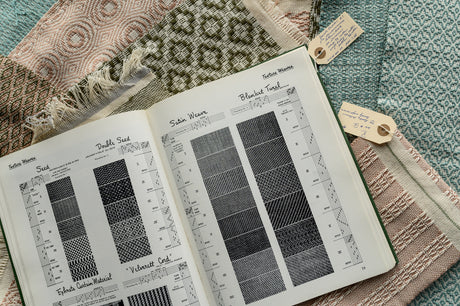
How I Became a Marguerite Porter Davison Fan
When we start weaving, we also start collecting: yarn, reeds, odds and ends, shuttles, bobbins, and of course books. My current weaving library is probably closing in on 100 books these...
Free shipping on orders over $250. Some exceptions apply.

When we start weaving, we also start collecting: yarn, reeds, odds and ends, shuttles, bobbins, and of course books. My current weaving library is probably closing in on 100 books these...

Burnt orange and teal are a proven combination. The fiery oranges and reds pair perfectly with the cool teal to create a feeling of fused opposites: land and sea, earth...

Reminiscent of antique grain sacks used in the 1800s, these stripes never get old. These towels are a treat for your hands and only get better with age. Linen is...

These towels are inspired by tubs of pastel sorbet on a hot day. This subdued pastel palette pairs refreshing minty greens with warm peach, blush, and a pop of yellow. The cream backdrop...

The "Monday Morning" study group at the Edmonton Weavers' Guild did a collective project where they each decided to make a weaving in response to the Emily Carr Painting, "A Rushing...

In our Weave & Sew workshops we guide participants through creating one of a kind pieces from thread, to cloth, to garment. We love the whole process and have decided to share...

With the Alberta Craft Council Exhibition “Art in Ubiquity” up, we have been thinking a lot about tea towels. Both Angela and I wove tea towels for our Mothers for...
People are often wary of weaving with linen. It has a reputation for being unforgiving. We have put together some of the reasons why we love working with linen and...

Our First Learning Resource: Beginner Tapestry: Weaving on a Hand Loom Check out our first Youtube video! We are excited to share with you some techniques for weaving on our...
For our first project we wanted to create a simple top that would transition well through the seasons. We wanted the top to look good with mid-high rise jeans and...